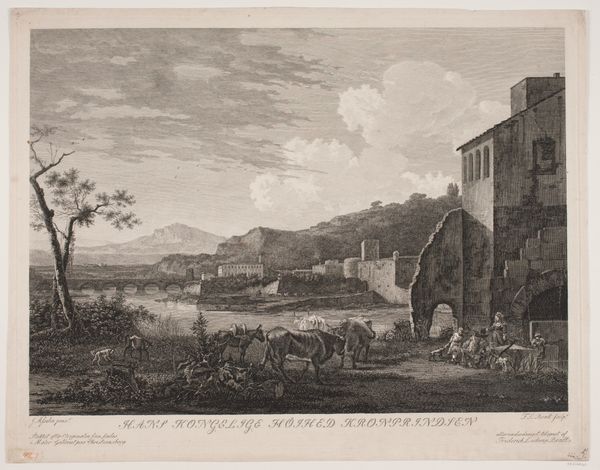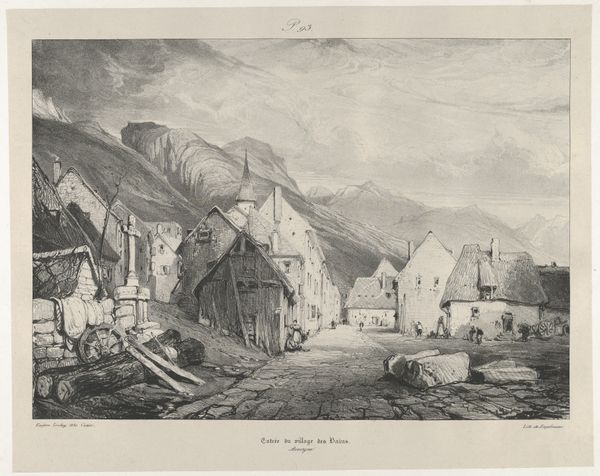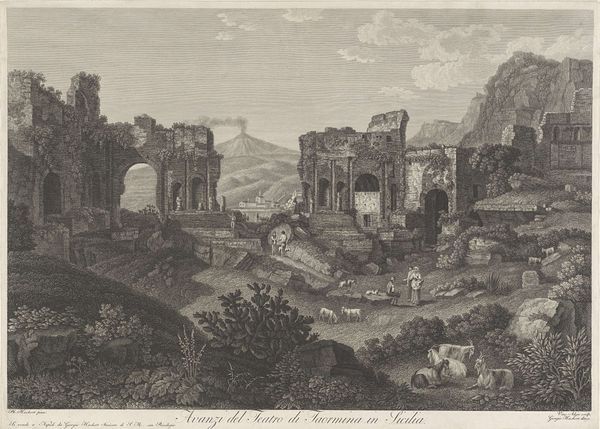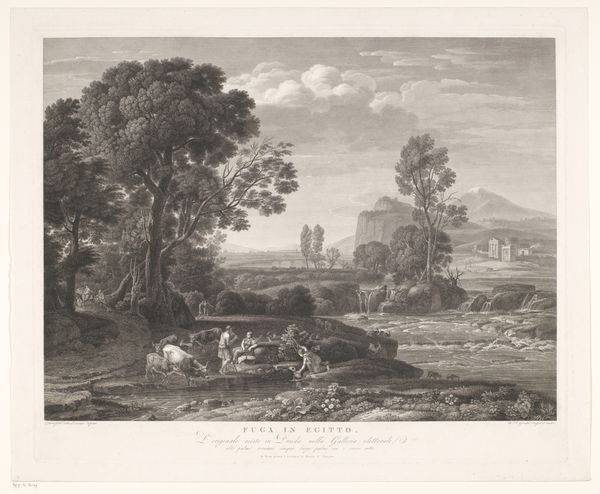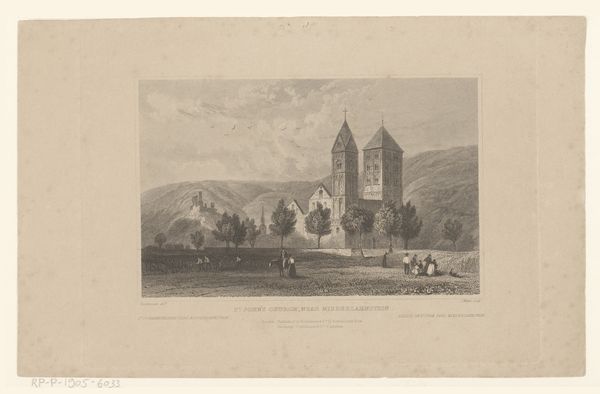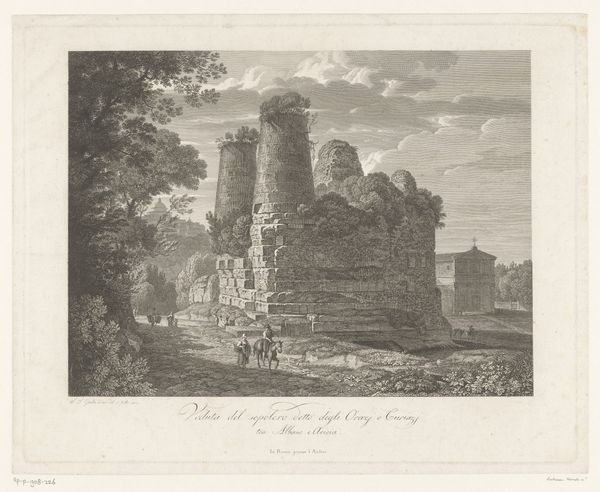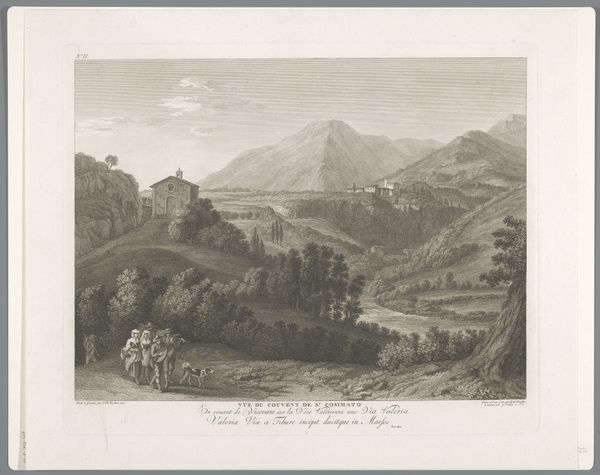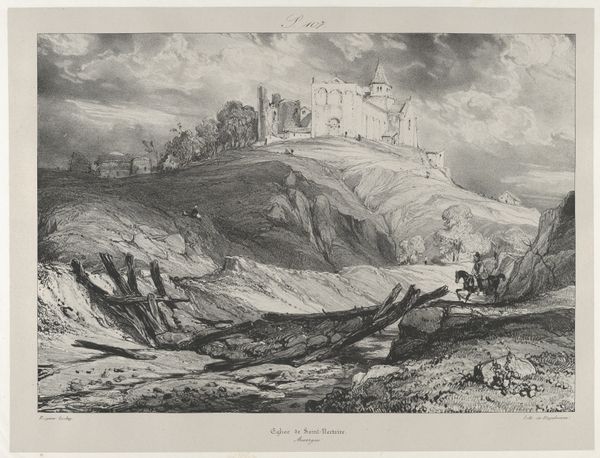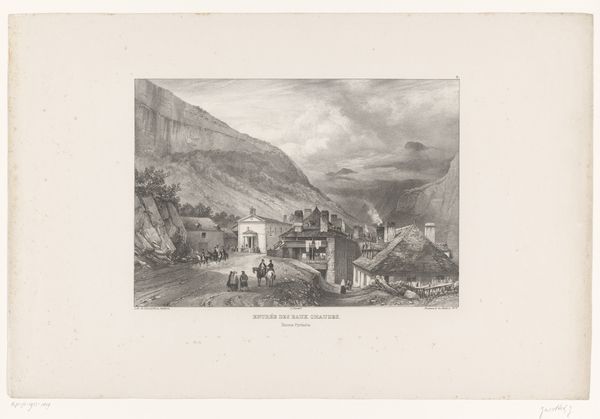
General View of Castle Ruins and of The Village of Saint-Necataire 1831
0:00
0:00
drawing, print
#
drawing
# print
#
landscape
#
romanticism
#
cityscape
#
realism
Dimensions: Sheet: 20 7/8 in. × 14 in. (53.1 × 35.5 cm) Image: 12 13/16 × 9 15/16 in. (32.5 × 25.2 cm)
Copyright: Public Domain
Editor: This is "General View of Castle Ruins and of The Village of Saint-Necataire," a drawing by Eugène Isabey from 1831. It's a somber scene, isn't it? You have the crumbling castle overlooking this rather modest village. What do you see when you look at this piece? Curator: I see a work deeply embedded in its time, reflecting a society grappling with the legacies of feudalism. Look closely at the textures. The artist painstakingly renders the stones, the rough-hewn roofs, the worn paths. It speaks to the labor, to the material reality of the people who built and inhabited these spaces. How were those stones quarried? What were the working conditions? Editor: So, it's less about the Romantic idealization of ruins and more about the process behind them? Curator: Precisely. Romanticism is present, but let's consider the social context of its creation. The means of production are paramount. The print-making process allows for wide distribution and therefore wide social commentary, right? Who had access to images like these, and what did they represent to them? The materiality speaks to power, to the control of resources. Notice how the ruins command the hilltop, even in their decay. Editor: That’s an interesting point. So the choice of subject matter is itself a commentary on social structure and perhaps also on modes of artistic creation and consumption at the time. Curator: Absolutely! Isabey isn’t simply depicting a scene; he is subtly critiquing the historical and economic forces that shaped it. What do you think the role of landscape plays in understanding class and material production? Editor: Wow, I didn't think of it that way at all. I came in thinking "ruins equals Romanticism," but seeing it as a document of labor and social structures makes it much more relevant. Thank you. Curator: And thank you, your fresh eyes made me consider the relationship between landscape and its cultural function even more deeply.
Comments
No comments
Be the first to comment and join the conversation on the ultimate creative platform.
